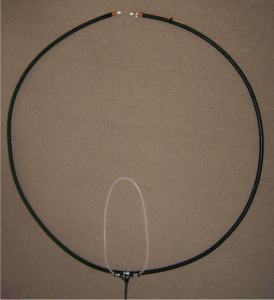This article documents a series of NEC-4 models at 7MHz inspired by Paul Casper’s (K4HKX) small transmitting loop using 3″ conductor described on his web page at http://qrz.com/db/K4HKX .
The basic loop dimensions derive from 3″ (76.2mm) OD copper tube, with octagon side lengths of 27″ (685.8mm).
This series explores the effect of antenna height. (Note the models have not been calibrated to Paul’s scenario, they are stand alone models of a somewhat similar scenario for the purpose of studying the effect of height.) Continue reading Analysis of a series of NEC-4 models of a low loss small transmitting loop at 7MHz at varying height

